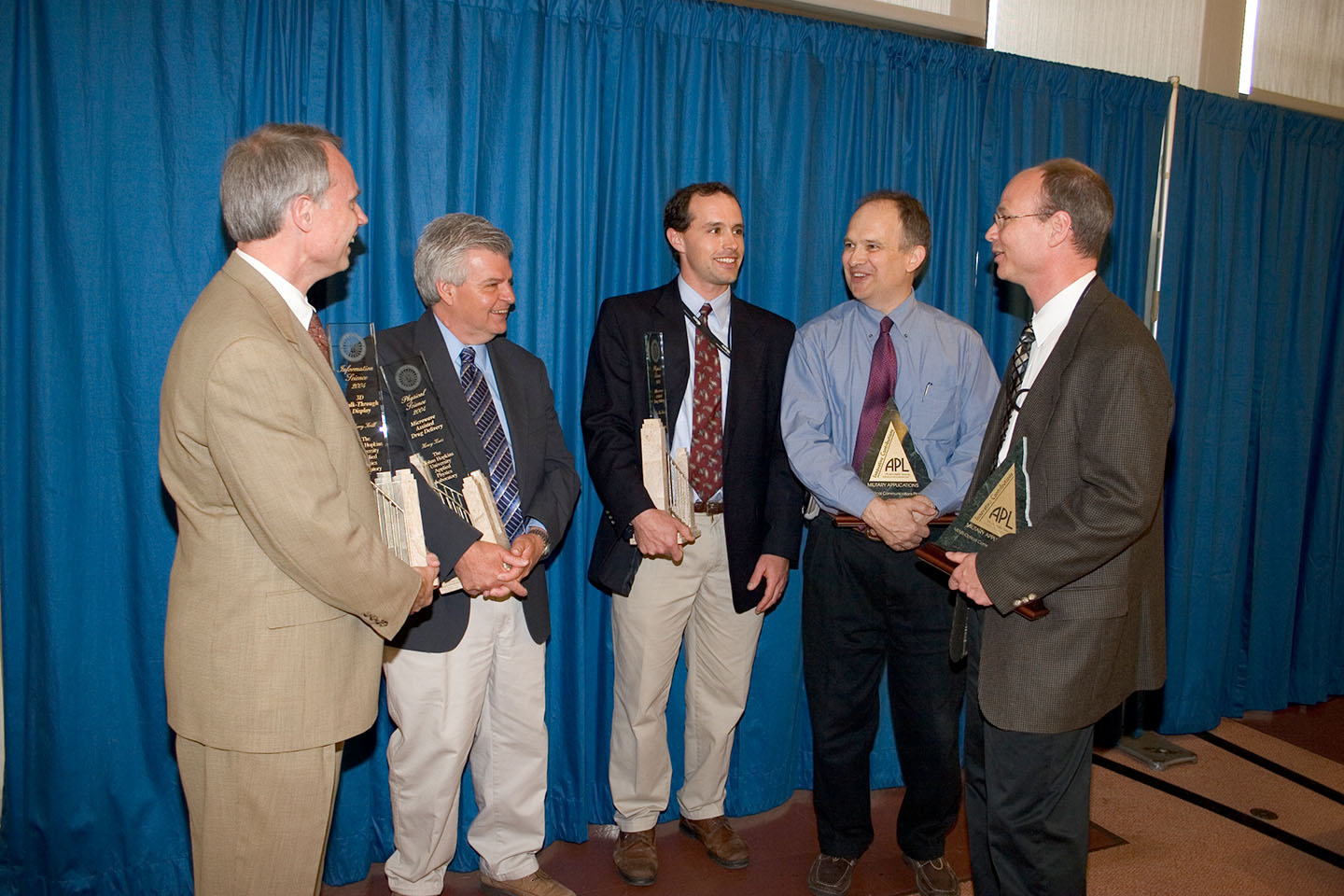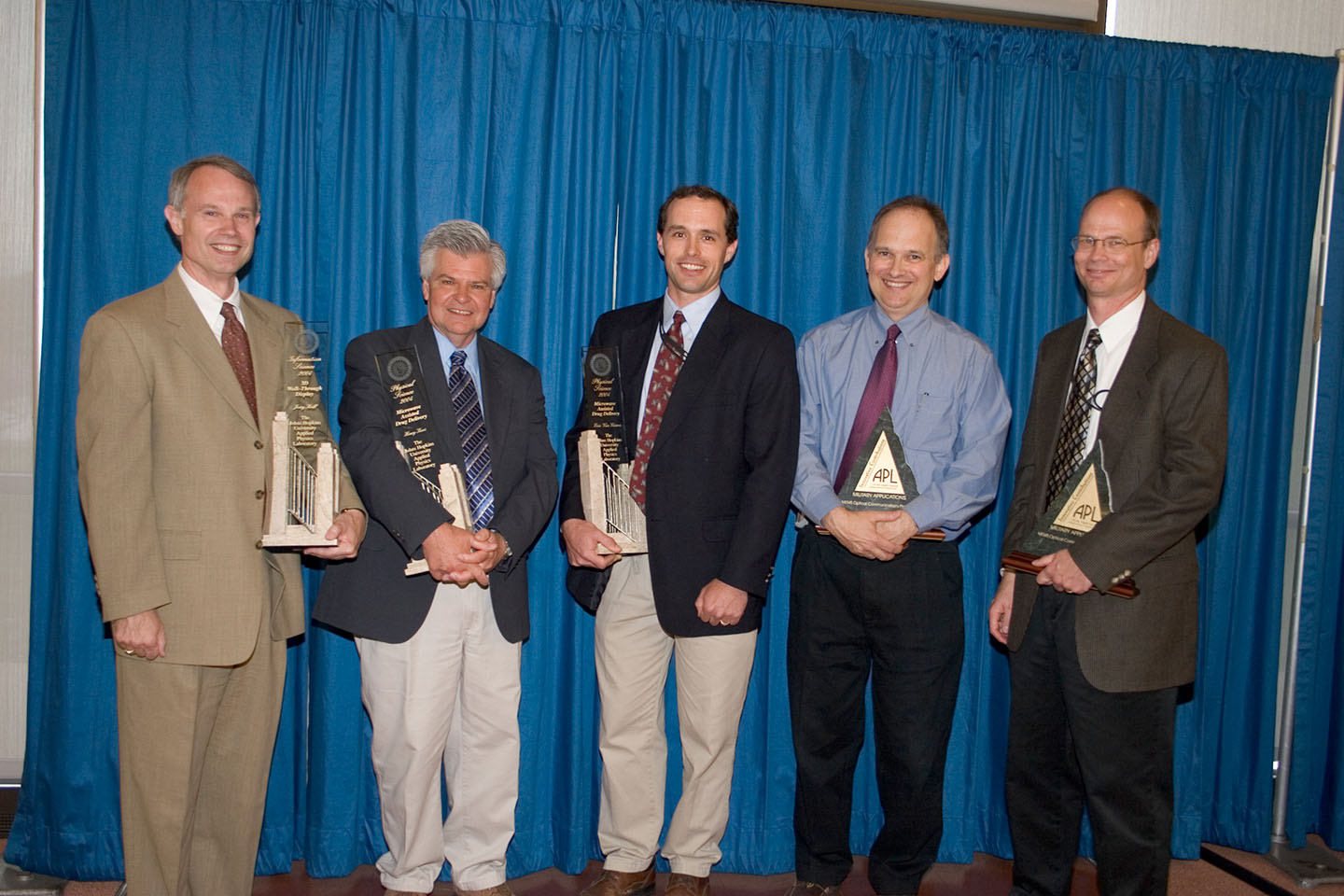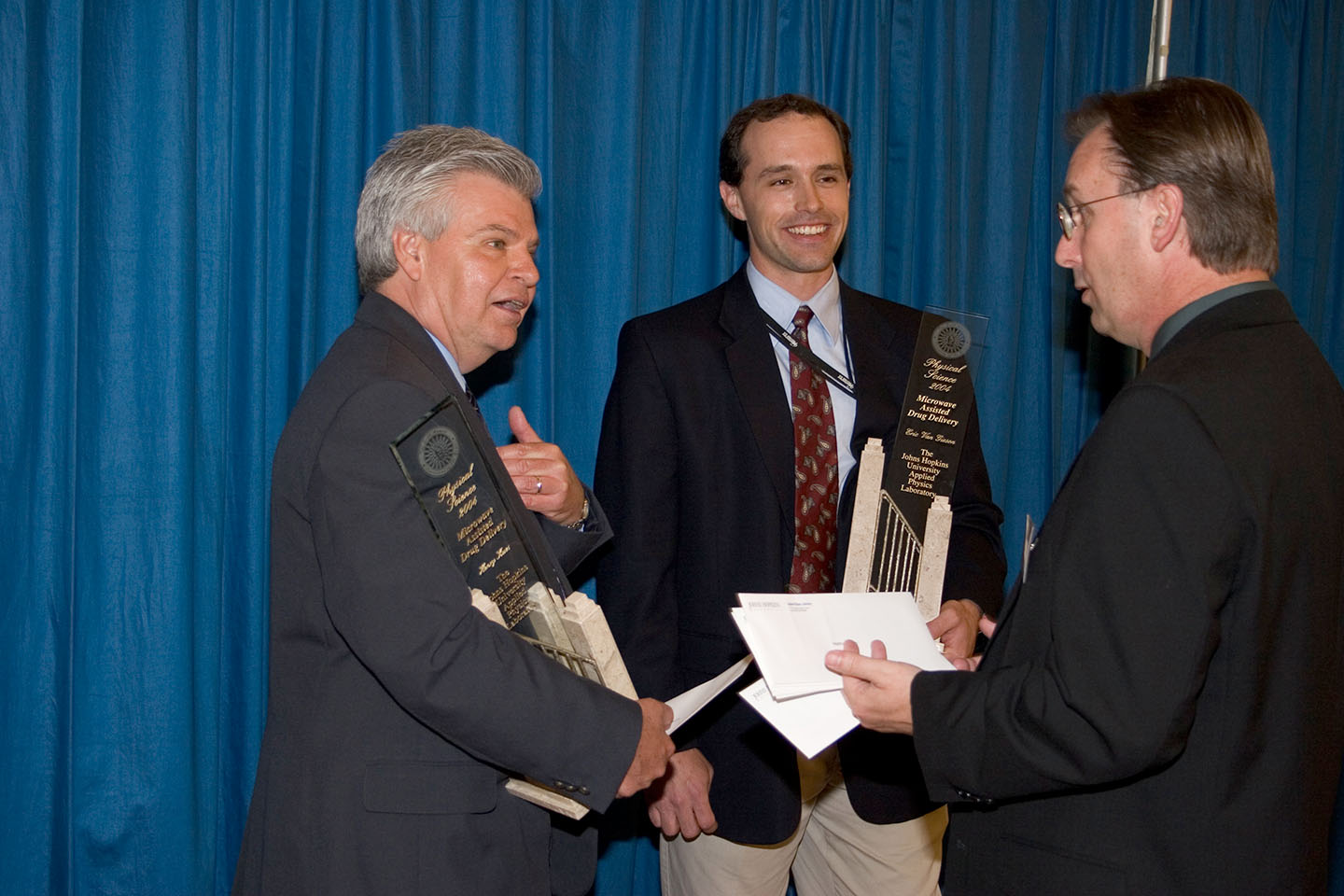Press Release
Johns Hopkins Applied Physics Laboratory Names Inventions of the Year
Thu, 04/21/2005 - 19:39
A system that helps the body absorb drugs more effectively, technology that immerses viewers in 3-D displays, and laser beams that enhance the security of optical communications were announced tonight at The Johns Hopkins University Applied Physics Laboratory's Inventions of the Year. The annual awards event showcased technologies submitted in 2004 that were developed by APL staff members.
Top inventions in the Physical Sciences and Information Science categories were selected by an independent panel of 20 representatives from industry and patent law, based on their benefit to society, improvement over existing technology, and commercial potential. APL also presented a new award that recognized Innovative Contributions to the Military, which was chosen from inventions submitted in the past five years.
APL Director of Technology Transfer Wayne Swann and former Secretary of the Navy (acting) Robert Pirie presented plaques and cash awards to teams in the categories of Physical Sciences, Information Science and Innovative Contributions to the Military.
Winner: Physical Sciences
Microwave/Radio Frequency Energy-Assisted Drug Delivery Device
Henry A. Kues and Eric J. Van Gieson have developed a way to increase the effectiveness of medications while reducing negative side effects using a handheld microwave transmitter to enhance drug absorption.
The transmitter emits microwaves (or radio frequency) energy that can temporarily make blood vessels more permeable, possibly by opening gaps in the capillary walls, resulting in quicker drug absorption. Enhanced absorption could allow doctors to use less medication, especially when treating areas of the body that are resistant to drug therapy, and to better target drug delivery.
This research is especially important when dealing with brain-related disorders because the brain is protected by a blood barrier that allows few molecules to cross it. Only small, fat-soluble molecules can breach the barrier but some of the most promising medications for neurological disorders and brain cancer are large-molecule drugs. By relaxing the brain's protective barrier, drug therapy could possibly be used in place of more invasive procedures.
Sometimes standard methods of drug delivery, such as pills taken orally, do not work. For example, peptide, protein, and DNA therapies require a delivery system that puts medication in the blood stream rather than the stomach where it would probably be digested before it could produce the desired result. Microwave assisted drug therapies open options for a wider range of medications in this and similar situations.


